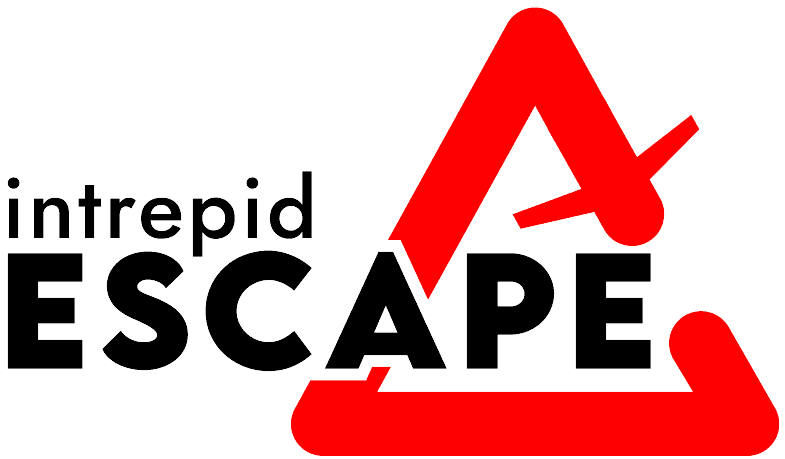Page Contents
If there’s one place in Canada that you just can’t miss on your travels, it’s surely Banff. And if you have limited time, planning the best 3 day Banff itinerary is a must, and that’s what this guide is all about.
Taking a three-day trip to Banff means discovering the Canadian Rockies, and trust me when I say that the landscapes are sometimes overwhelming!
In this itinerary, we’ll go through the essential highlights in Banff National Park. Popular tourist attractions, places to eat and sleep, and personal tips after travelling to Banff several times.
Yes, your time here is limited, but that doesn’t mean you can’t have a great time, and you’ll find out why in this guide!

Where is Banff?
Banff is located in the province of Alberta in western Canada. It’s located within Banff National Park, which is part of the larger Canadian Rockies mountain range.
The town is about 128 kilometres (80 miles) west of Calgary and is accessible via the Trans-Canada Highway.
How to Get to Banff?
Banff is accessible by air through Calgary International Airport, which is about a 90-minute drive away. From Calgary, you can rent a car, take a shuttle bus, or arrange private transportation to reach Banff.
I personally recommend renting a car either in Calgary or Banff so you have more freedom to explore the national park. I drove from Calgary to Banff on my Canada road trip, and I recommend you do the same if you have the time!
Plus, driving offers scenic views along the Trans-Canada Highway, providing a beautiful introduction to the Rocky Mountains as you approach the town.
Short on time?
Here are the quick things you need to know for your trip to the Canadian Rockies
These are our reliable partners and services that I recommend and personally use on my trips.
➡️ Search for the best Tours on Viator & GetYourGuide
➡️ Look at affordable and luxury Hotels on Booking and Expedia
➡️ Options for Car rental
➡️ The best travel insurance for Canada
➡️ Check the flight prices from the UK or the USA
➡️ Make sure you have your e-SIM!
Each offers unique value tailored just for you. Don’t miss out on these when travelling to the Canadian Rockies!

How to Get Around Banff National Park?
Getting around Banff National Park is convenient with various options available. You can drive, which offers flexibility to stop at multiple scenic points. Public transportation is also available, including the Roam bus service, which connects major sites and attractions.
Alternatively, if you don’t plan to rent a car but still want to explore Banff conveniently, I highly recommend checking out the tour below.

This is the Best Tour in Banff
Want to make the most of your time? Check out this tour to Columbia Icefields, Jasper, and Lake Louise.
It includes the national park fees, accommodation, and an expert guide!
Where to Start Your 3-Day Banff Itinerary?
Start your 3-day Banff itinerary in the town of Banff itself. It serves as a central hub, offering easy access to accommodations, dining, and shopping, as well as proximity to major attractions like Banff Gondola and Lake Louise.
Starting here allows you to gradually explore further into the park.
Best Time to Visit Banff National Park
The best time to visit Banff National Park depends on your activities of interest. Summer (June to August) is ideal for hiking and lake tours, with long daylight hours and warm weather.
Winter (December to March) is perfect for skiing and snowboarding. Shoulder seasons like late spring and early autumn offer fewer crowds and beautiful natural scenery, making them great times to visit as well.
Banff or Jasper?
Choosing between Banff and Jasper depends on your preferences. Banff is more accessible and tends to be busier, offering a wide array of shops, restaurants, and accommodations. It’s renowned for iconic sites like Lake Louise and the Banff Gondola.
Jasper, on the other hand, is quieter and more remote, ideal for those seeking a more relaxed experience with nature. It’s home to the scenic Icefields Parkway and the expansive Jasper National Park, which is a haven for wildlife and offers more rugged landscapes.
I compared both Jasper and Banff National Parks, and you’ll want to read that guide too!

Where to Stay in Banff?
I recommend staying in Banff Town and coming back every day after exploring around. During these 3 days in Banff, you’ll explore several parts of the national park, so coming back into town makes the itinerary more convenient in that regard.
Here are the best hotels I recommend staying in Banff.
Luxury: Moose Hotel and Suites
Moose Hotel and Suites provides a luxurious retreat just a minute’s walk from downtown Banff. It features a rooftop lounge with two hot pools and panoramic mountain views, a full-service spa, and beautifully appointed rooms with fireplaces and private balconies.
This upscale hotel combines rustic elegance with modern amenities, making it an ideal choice for travellers seeking comfort and style in the heart of the Canadian Rockies.

Mid-Range: Banff Inn
Banff Inn offers comfortable and contemporary accommodations on Banff Avenue, just a short walk from the town centre. The hotel features updated rooms with cosy bedding and modern amenities, including a sauna and a hot tub for relaxation.
An on-site bar and restaurant provide convenient dining options. Banff Inn represents excellent value for a blend of convenience and comfort in a central location.

Budget: Samesun Banff Hostel
Samesun Banff Hostel is a budget-friendly option that doesn’t sacrifice quality in any way. Located on Banff Avenue, this hostel offers a sociable environment with both dormitory-style and private rooms available.
Amenities include a communal kitchen, a lively common area, and daily activities aimed at solo and young travellers. Samesun Banff is perfect for those looking to meet new people while exploring Banff without breaking the bank.

Ultimate 3 Day Banff Itinerary
Now that you know the essentials about Banff and how to get there and stay, it’s time for the main section of this guide.
When preparing this 3 day itinerary for Banff, I made sure to include all the best spots in the national park without the plan feeling rushed, and I’ll include personal recommendations for hotels and restaurants, as well as guided tours.
I recommend leaving Calgary early to start your 3 days in Banff itinerary as soon as possible without wasting any minute. With that in mind, let’s jump right into it!
If you have more time available, check out this 7 days in Banff itinerary.

Day 1: Banff Town and Lake Louise
Start your exploration of Banff by settling into your accommodation and getting acquainted with Banff Town.
This charming mountain town offers a mix of scenic beauty, shopping options, and nightlife making it a great place to start your journey.
Spend your day strolling through Banff Avenue, shopping in local boutiques, and dining in cosy cafés. Here’s a sample itinerary for your first day in town.

Morning: Arrival and Check-in
Start your Banff adventure by checking into your accommodation. Take some time to settle in, unpack, and prepare for a few days full of incredible views and fun activities.
Familiarise yourself with the area, check out local amenities, and plan for an exciting day ahead.
Morning: Lake Louise
Once you checked in, I recommend heading straight to Lake Louise, a jewel of Banff National Park and it’s famed for its turquoise waters and the stunning Victoria Glacier overlooking it. It’s the perfect place for photography lovers, and you’ll easily understand why.
Once you get there, consider taking a short hike along the lake’s shoreline trail, which is easy and offers spectacular views of the surrounding mountains.
Bring along a water-resistant jacket and sturdy walking shoes, as the weather can change quickly. Don’t forget your camera and perhaps a picnic breakfast to enjoy with a view!
I recommend passing by Lake Louise Visitor Centre to get maps and brochure about the area and the different trails, as well as knowing the current conditions and avoid ending up in the wrong place.
Lake Louise is only about 35 minutes’ drive from Banff Town, and that makes the perfect half-day trip.

Lunch at Mountain Restaurant
Out of all places for brunch or lunch at Lake Louise, Mountain Restaurant is probably the best value for money, with burgers, pasta, poutine, and steak, among other dishes, which are all delicious.
And if you haven’t had lunch in town, this is the perfect alternative.
You’ll want to try the Bison Burger with a side of Yam fries, which is one of the best items on the menu in my opinion, for $25.50 – It’s not the cheapest dish, but considering the location, it’s not such a crazy price!
Afternoon: Moraine Lake
After exploring Lake Louise, take a short drive (20 minutes or so) to Moraine Lake, set in the breathtaking Valley of the Ten Peaks.
This lake is smaller than Lake Louise but just as stunning, with its intense blue waters and dramatic mountain surroundings. The best thing to do here is to hike the Rockpile Trail, which is relatively short and manageable but offers one of the most iconic views in Canada.
The lake’s colour is most vibrant in the midday sun, making it ideal for your afternoon excursion. Pack a lunch, wear sun protection, and bring plenty of water, as exploring the area can take a few hours.
It’s worth noting that private cars are no longer allowed at Moraine Lake, so you’ll have to take one of the following options to get there:
- Parks Canada Shuttle
- Roam Transit
- Commercial bus
- Call a taxi
In all honesty, the on-site parking used to fill up in the early hours (as early as 4.00 AM!) so it makes sense to take a shuttle bus or taxi instead.

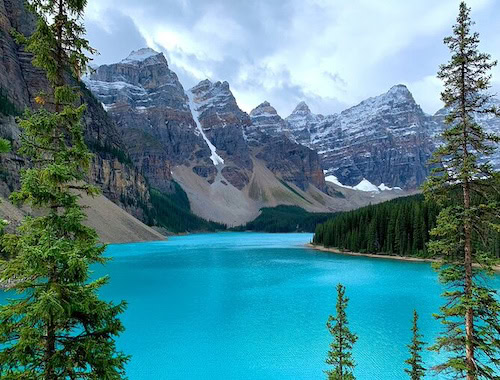
The Best Day Tour in Banff
Want to spend the second day in style? Check out this full-day tour to Lake Louise and the Icefields Parkway.
It includes transporation, the best spots in the national park, and an expert guide!
Late Afternoon: Canoeing or Relaxation at Lake Louise
Return to Lake Louise for the evening before going back to Banff for the night. You can rent a canoe to paddle on the lake, which is the best way to see the sunset against the mountains.
Canoe rentals are available on a first-come, first-served basis at The Fairmont Chateau Lake Louise Boathouse.
The price for a canoe rental is $160 per hour, or $95 per hour if you’re a guest. Yes, that is pricey, but it’s also worth it, and you’ll have one of the most beautiful views in the entire world.
Alternatively, if you prefer a more relaxed end to your day, find a spot along the shore to simply sit and admire the tranquillity of the lake.
Now, if you don’t want to spend the whole afternoon at Lake Louise, you could maybe head to Johnston Canyon, which is only about 25 minutes away by car, and you’ll have a great time there!

Evening: Banff Upper Hot Springs
Back in Banff for a relaxing end to your day. The Banff Upper Hot Springs is located only about 15 minutes from Banff Avenue and it’s amazing.
Relax in the soothing, mineral-rich waters of these naturally heated springs while enjoying panoramic views of the surrounding mountains. While you’re probably not too tired from the road to Banff, it’s good to be ready for the upcoming week!
The entry costs $17.50 per person and it’s worth every penny! The hot springs close at 10.00 PM, so you have enough time to come after a trip to Lake Louise.


Day 2: Banff Gondola and Yoho National Park
The Banff Gondola is yet another fun thing to do in Banff and you just must do it, and that’s why it’s the first activity on day 2. The gondola opens at 9.00 AM, and you can leave Banff Town around 8.00 AM to get there early and keep the afternoon for Yoho National Park.
Here’s the ideal plan for the second of these 3 days in Banff.
Morning: Banff Gondola
After having breakfast at your hotel or in town, head to the Banff Gondola for a breathtaking ascent to the summit of Sulphur Mountain.
The gondola ride offers panoramic views of the surrounding mountains, Banff Town, and the Bow Valley. The journey to the top takes about eight minutes, during which you can enjoy the stunning vistas – Arguably the most beautiful in Canada.
Once at the summit, explore the boardwalk that leads to Sanson’s Peak and the Sulphur Mountain Cosmic Ray Station, a National Historic Site of Canada.
You’ll also find interactive exhibits and a multi-sensory theatre at the Above Banff Interpretive Centre, which gives more information about the area’s natural history.
Don’t miss your chance to have a meal at Sky Bistro, where you can enjoy a meal with one of the most scenic views in all of Banff.
Be sure to bring a camera, wear layers (as temperatures can be cooler at the summit), and have sunglasses handy for the bright daylight reflecting off the mountains!



Lunch at Sky Bistro
Enjoy a satisfying lunch at Sky Bistro after your trip up Sulphur Mountain, either by hiking or taking the gondola. This restaurant sits at the top of the mountain and offers an outstanding view of the Canadian Rockies.
Expect to pay a premium for the views, but I can’t stress how incredible they are!
It’s a good idea to book a table by the window ahead of time, especially if it’s just for two, so you can enjoy the amazing scenery while you eat.
The staff at Sky Bistro are friendly and quick to serve, making sure your meal is enjoyable from start to finish. The menu has some great options that are perfect for refuelling after your morning activities. You should definitely try the clam chowder and the duck, both are delicious and satisfying. The kale salad is a fresh, tasty choice too.
While you won’t see the town from Sky Bistro, the breathtaking mountain views more than make up for it, and it’s the perfect place for a delicious lunch.
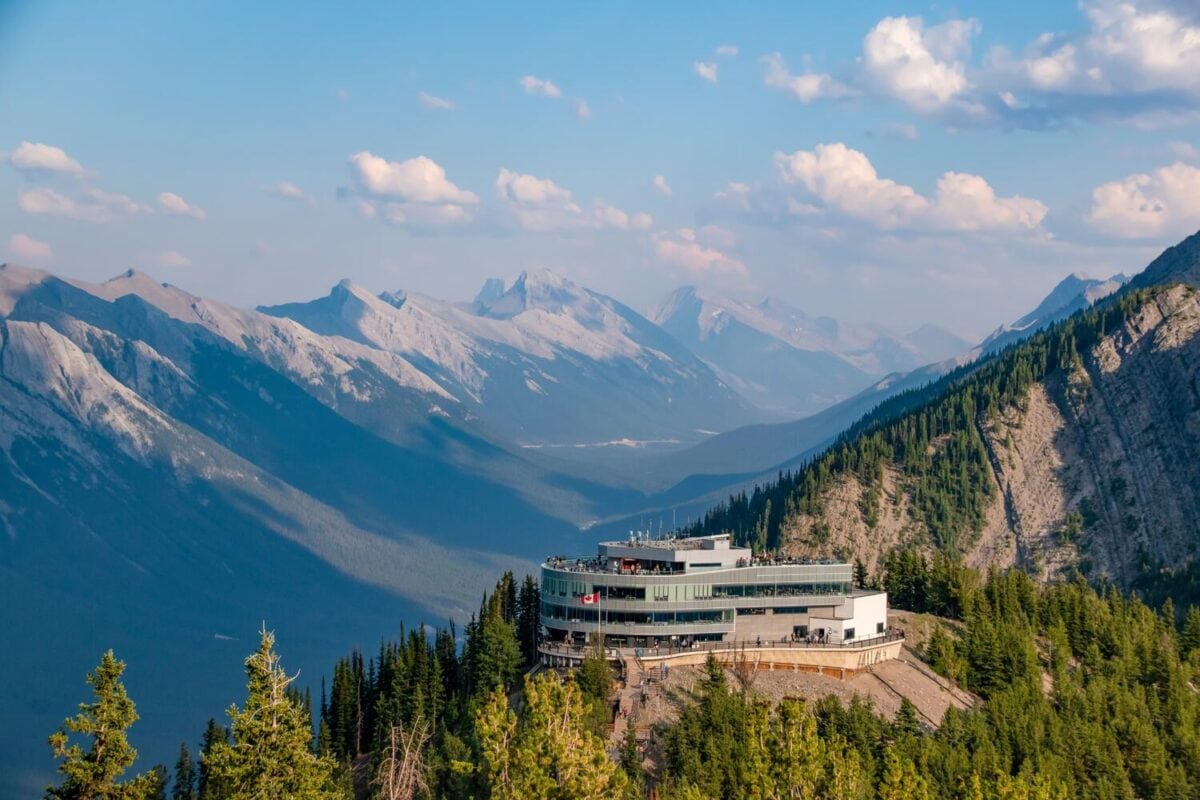
Afternoon: Takakkaw Falls
Yoho National Park is yet another must-see in Banff National Park, and I recommend starting with Takakkaw Falls, one of the highest waterfalls in Canada.
The drive to the falls takes about two hours from Banff Gondola, with scenic views along the way, so get ready to stop a few times for photos.
Before entering the park, you’ll have to pay the admission fee, which is $11.00 per person or $22.00 per family/group, and I can assure you it’s worth every single penny!
Once there, you’ll take a short 20-minute walk from the parking area through a well-marked trail that leads you to the base of the falls.
The waterfall is spectacular, with water plunging dramatically over a cliff into the Yoho River.
Early morning is ideal for visiting as the area is less crowded and the light is perfect for photography. Plus, you’ll have plenty of parking spots in the morning.
Lastly, make sure to bring waterproof gear if you want to get close, as the spray can soak you on windier days.

Afternoon: Emerald Lake
After having fun at Takakkaw Falls, make your way to Emerald Lake, about an one-hour drive from the falls.
This lake is famous for its vivid turquoise-coloured water and magical setting surrounded by towering mountains.
Rent a canoe to paddle around the lake and enjoy the peaceful natural surroundings, or take a walk around the lake trail which takes about an hour to complete and is relatively flat.
It’s worth noting that renting a canoe costs $90 per hour, and despite being expensive, it’s cheaper than at Lake Louise.
The lake also has a picnic area, so in case you didn’t have lunch on the way from the Falls, you can bringing a lunch to enjoy with the view.
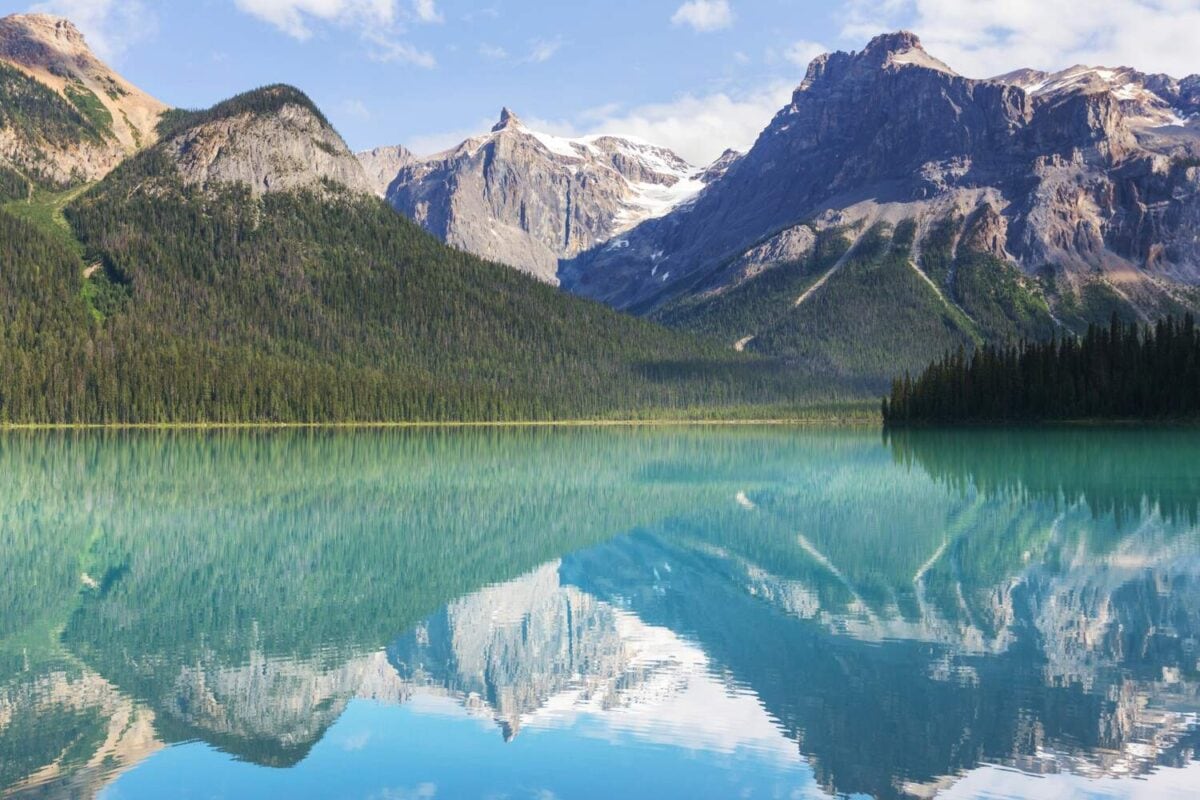
Spend the Night at Lake Louise Inn
After a full day of exploring Yoho National Park, settle in for the night at Lake Louise Inn, which is conveniently located on the way to Icefields Parkway, which is what day 3 is all about.
The rooms at Lake Louise Inn are designed to maximise your comfort, featuring a flat-screen cable TV and a coffee machine, ensuring you feel at home. Each room offers a private bathroom equipped with a hairdryer, and many rooms boast views of the impressive mountains.
There are 2 on-site restaurants, which is excellent if you don’t feel like heading out.
Legends Restaurant offers a menu full of hearty meals suitable for breakfast, lunch, and dinner, while the Timberwolf Pizza and Pasta Café is ideal for family dining with its relaxed atmosphere.
Additional amenities at the inn include an indoor heated pool and hot tubs, perfect for relaxing your muscles after outdoor activities.
In short, it’s one of the best, most convenient places to stay in the area, and I recommend booking now to secure your room.


Day 3: Icefields Parkway and Jasper Excursion
The Icefields Parkway is one of the most beautiful drives in the world, heading to the Columbia Icefield and its skywalk, and you simply can’t skip it on this 3 day Banff itinerary.
Explore the massive icefields and take a guided tour of the Athabasca Glacier. On your return, make stops at key viewpoints to fully appreciate the expansive landscapes.
I recommend spending the last night in Banff Town to make the departure smoother and more convenient as a whole.
Morning: Drive to Columbia Icefield
After a good night’s sleep and breakfast at Lake Louise Inn, get on a drive along the Icefields Parkway, one of the most beautiful highway stretches in the world, towards the Columbia Icefield.
The journey from Lake Louise to the Columbia Icefield covers approximately 130 kilometres (80 miles) and offers stunning views of towering mountains, vast icefields, and pristine lakes.
Allow about two hours for the drive, considering you’ll likely stop to capture photos of the landscapes.
Once you get there, make your first stop at the Columbia Icefield Skywalk – A glass-floored observation platform extending 30 meters out over the Sunwapta Valley.
It’s a fun experience, quite different from the activities you did on this 3 day Banff itinerary so far, allowing you to walk above the stunning glacier-formed landscapes and peer down to a 280-meter drop.
Be sure to bring your camera for this visit—the panoramic views are stunning and offer a unique perspective of the rugged mountain terrain.
There’s a Starbucks, a gift store, a restaurant, and a café here, so you can have a snack or a meal before heading to the next stop, the Athabasca Glacier.
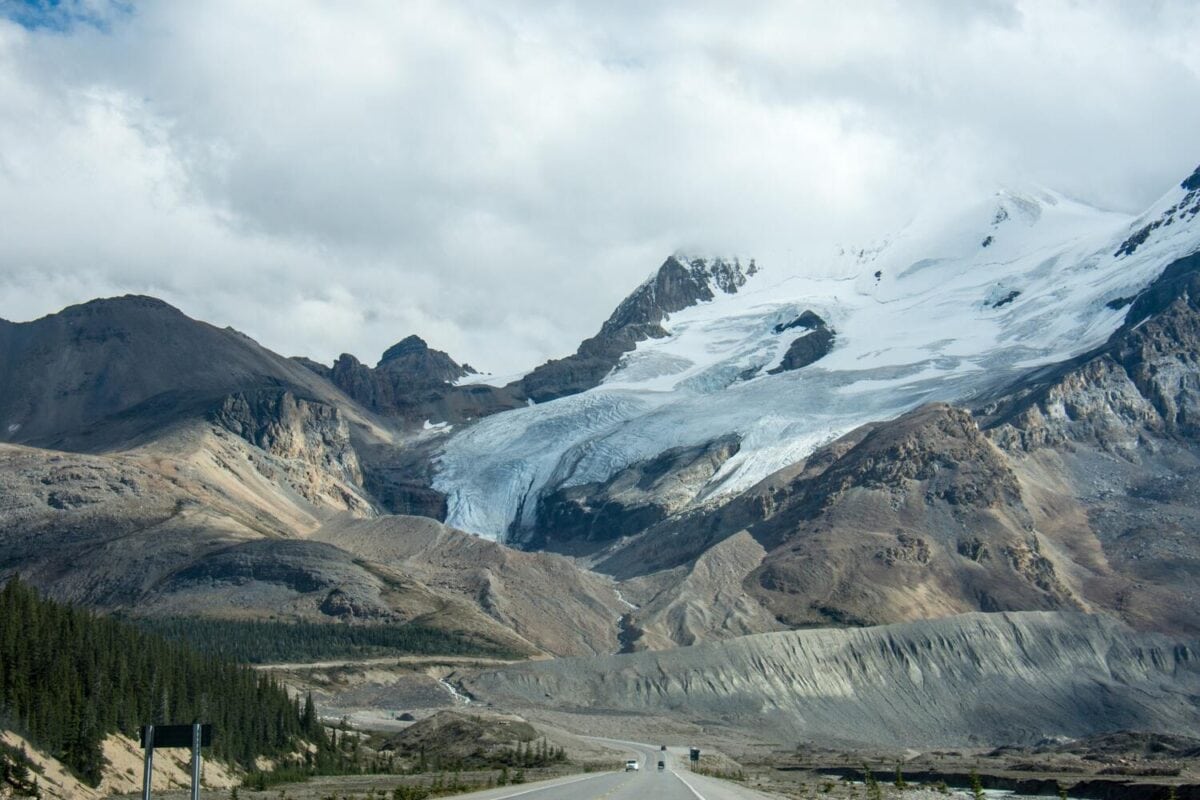
Afternoon: Athabasca Glacier Tour
In the afternoon, take a guided tour of the Athabasca Glacier, one of the most accessible glaciers in North America.
This is a highlight of the Icefields Parkway and offers a unique opportunity to walk on, feel, and drink from a glacier. The tour typically involves travelling to the middle of the glacier, where you can step out onto the ice and experience the glacier up close.
The tours are educational, focusing on the geology, glaciology, and environmental impacts on the glacier.
The best part? You can actually take some glacier water home with you, so don’t forget to bring a bottle!
Note that taking a tour is optional. However, as someone who highly values adventure and independent trips, I can tell you that it is very much worth it and you’ll love your time!

Evening: Drive Back to Banff with Scenic Stops
This 3 day Banff itinerary is coming to an end, and it’s time for the return drive to Banff, with several stops at key viewpoints along the Icefields Parkway.
I recommend passing by and stopping at Peyto Lake, which is known for its vivid blue waters shaped like a wolf, and the Weeping Wall, a series of waterfalls cascading down a cliff face.
The drive back is the perfect time to capture sunset photos and enjoy the tranquillity of the Rockies as the day winds down.
Plan to return by early evening, so you have time to pack for the departure from Banff and have a nice, last dinner in town.

FAQ About Banff National Park
Now that you know the best three day itinerary for Banff, let’s answer a few questions that first-timers often have.
Do You Need a Pass for Banff National Park?
Visiting Banff National Park requires a Parks Canada Discovery Pass, which grants you entry to all national parks in Canada for the duration of the pass.
Alternatively, you can get a day pass, which is a good alternative when spending only 3 days in Banff,
You can purchase the pass online, at entry gates, or at visitor centres within the park.
What Wildlife to See in Banff National Park?
Apart from the landscapes, Banff National Park is a dream for wildlife lovers, and you’ll get to spot a variety of animals in their natural habitat.
The common species you can see here include elk, deer, and bighorn sheep, often seen near roadways or in meadows. The park is also home to more unique animals such as black bears, grizzly bears, cougars, bald eagles, ospreys, and various waterfowl.
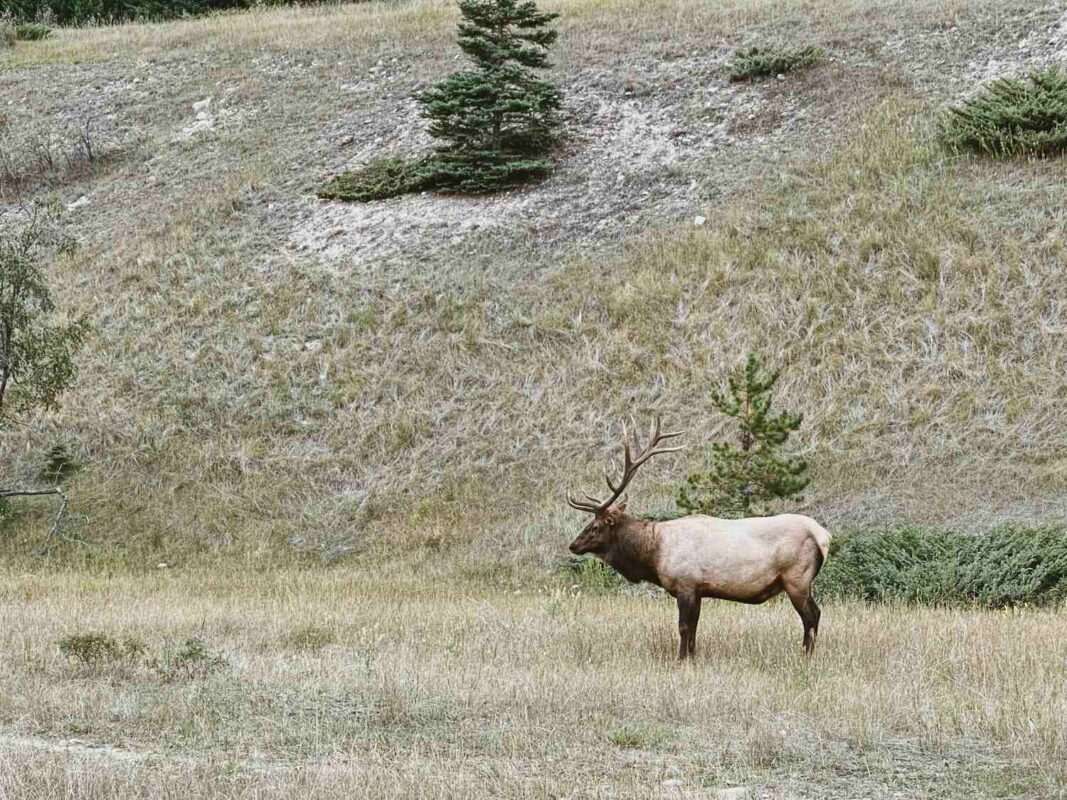
Are There Guided Tours in Banff?
Absolutely, there are many guided tours around Banff National Park, catering to various interests and activity levels.
These include hiking tours to scenic views and hidden gems, wildlife tours for spotting local fauna, and historical tours exploring Banff’s rich past.
I included a few tours in this 3-day itinerary for Banff, but if you want more options, check out all the Banff tours here below.
What to Pack for Banff?
Packing for Banff depends largely on the season. If you visit in the summer, bring breathable clothing, a sturdy pair of hiking boots, sunscreen, a wide-brimmed hat, and sunglasses.
Layers are crucial as mountain weather can change rapidly, including a waterproof jacket.
On the other hand, winter requires thermal wear, gloves, a warm hat, and insulated, waterproof boots. Year-round essentials include a reusable water bottle, snacks, a first aid kit, and bear spray for safety.
Of course, no matter the season, don’t forget a camera or binoculars for capturing the scenic beauty and wildlife!

Final Thoughts
This was the ultimate travel plan for Banff in three days, and I’m confident you have everything to start travelling. We’ve reviewed the hotels and restaurants where you can have a great stay and meal, as well as the best itinerary for Banff in only 3 days.
Thanks for sticking until the end and as always, if you have any questions or suggestions, please comment below and I’ll get back to you as soon as possible!
